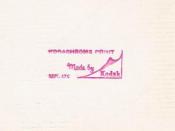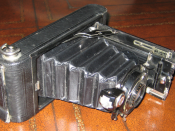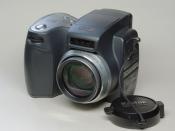I believe Kodak's strategy will succeed. Why shouldn't the company that started the photo business a century ago enter the printer business, particularly with an eye on getting more of us to print our digital photos? The Kodak brand has always ranked among the top in the world by name recognition and quality. Eastman Kodak has built its brand loyalty since 1888 when George Eastman produced the first camera that simplified the complex process of photography and made it available to everyone. Since then, Kodak has pioneered many new products to numerous markets for a multitude of reasons: pleasure, business, medical, scientific, and entertainment. In the early years of 2000, Kodak was faced with a huge challenge as their main driver of revenue, camera film and processing was losing popularity. Technology was driving the trend to go digital and Kodak's film business was clearly in jeopardy. Kodak shifted their main focus to digital and over the last six years has become a leader in the market today.
In 2001, Kodak introduced the Easy Share System which consisted of a digital camera and docking station. The same year, Kodak acquired Ofoto, the leading online photography service.
As disruptive digital technologies have hollowed out Kodak's core film business, the company's stock price has dropped more than 60 percent since peaking 10 years ago. Kodak has laid off thousands of workers as part of a desperate attempt to re-invent itself over that decade. Kodak has appropriately tried to diversify beyond film, creating a portfolio of simple-to-use digital cameras, printers that plug directly into cameras, and a photo sharing Web site through its purchase of Ofoto in 2001. Unfortunately, Kodak's sagging stock price shows that these new businesses have not gotten big enough, fast enough to offset the decline of its old business. Disruption,



Nice and interesting essay
I haven't any idea about this means about Kodak but now i am able to understand what the marketing strategy of Kodak will
0 out of 0 people found this comment useful.